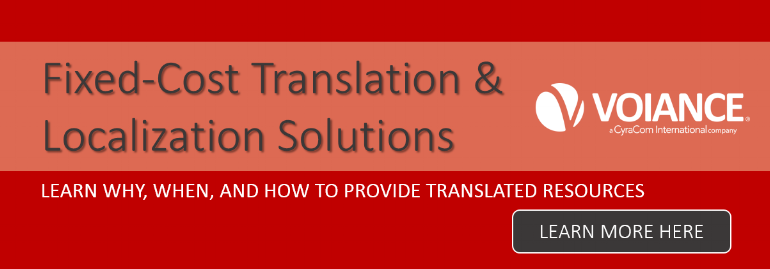
In our last post, we discussed the ways in which translating online resources into commonly-spoken non-English languages may help insurance carriers increase their online sales and revenue, as well as improve the satisfaction of existing non-English speaking insureds and claimants.
Here are three more reasons insurance carriers should consider professional translation for self-service channels and online resources:
3. Multilingual Resources Position Carriers as True Proponents of Diversity
The five largest property and casualty carriers in the US to their commitment to diversity, inclusion, and multiculturalism. That message is unlikely to reach the diverse, non-English speaking populations most likely to appreciate it if it’s written exclusively in English. Making online resources available in multiple languages sends a clear message that diversity is something you act on, rather than just talk about.
4. Reducing Non-English Call Volume with In-Language Self-Service Options May Improve Center Metrics
Non-English calls tend toward higher Average Handle Time (AHT) than their English counterparts, so any action carriers can take to reduce non-English call volume should reduce AHT. Harvard Business Review has confirmed that companies experience a reduction in overall call volume after implementing streamlined, easy-to-use self-service channels, so opening up online forms, FAQ pages, and your web site as a whole to non-English speakers will likely have a similar effect on their call volume.
Remember that 57% of inbound call volume comes from customers who have already tried to help themselves online. Cutting call volume generally, and the volume of (more time-consuming) non-English call volume specifically, should lead to improved agent availability, since they’re taking fewer and shorter calls on average. Boosting availability should reduce hold/wait times for those customers whose concerns do require a phone call to resolve.
Reducing the number of calls from customers who didn’t want to call in but had to because self-service channels weren’t available in their language may also improve customer satisfaction scores, as discussed in part one.
5. Increasing Web Traffic to Online Resources Boosts Search Rankings
Google doesn’t release the specifics of how they rank search results, but it’s generally understood that the more visits your web pages receive, and the more time searchers spend there, the better your results will rank in future searches.
Since nearly 10% of US residents speak English “less than very well,” making your web page available in other languages increases your potential audience by that 10%. More visits to your site by non-English speakers, and more time on page because they can now read the information, should improve the likelihood that your pages are found in future searches. And with 75% of potential customers searching for information online prior to purchasing insurance, ranking higher than your competition in search results may provide a competitive advantage.
Now that you’re familiar with some of the benefits of translating online resources into multiple languages…

